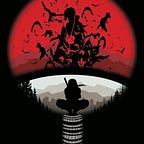Economic Forecasts on a Lipstick's Edge: Decoding the Resilience in Beauty Spending.
Is a Recession on the Horizon? Examining Economic Indicators Through Beauty Trends.
Economists often turn to unconventional indicators to gauge the health of the economy. One such intriguing metric is the "lipstick index," a term Estée Lauder chairman Leonard Lauder coined during the economic downturn following the September 11, 2001 attacks. Lauder observed that during tough economic times, sales of lipsticks tended to increase, suggesting that consumers might be substituting more expensive indulgences with more affordable luxuries. In the fall of 2001, US lipstick sales surged by 11%, and during the Great Depression, cosmetics sales overall rose by 25%.
The Lipstick Index Evolution: From Lipstick to Moisturizers.
The COVID-19 pandemic brought about significant changes in consumer behavior. With masks covering faces and remote work becoming the norm, lipsticks took a backseat, replaced by skincare products. Estée Lauder's CEO, Fabrizio Freda, noted in 2020 that the "lipstick index" had been substituted by the "moisturizing index." Despite the product shift, the underlying concept of seeking small, affordable pick-me-ups during economic stress remained intact.
Current Trends: A Resurgence in Beauty Spending.
Recently, the beauty industry has shown signs of resilience despite economic uncertainties. Sephora announced a record sales year with €86.2 billion in revenue and €22.8 billion in profit thanks to strong organic growth across the majority of its business units, and data from consumer research group Circana revealed that prestige beauty sales outpaced mass-market beauty sales, growing 9% compared to 2% in the first quarter of the year. This trend indicates a potential shift to luxury beauty products even as consumers face economic pressures.
The Resilience of the Beauty Industry.
Beauty products, particularly those in the prestige market, have demonstrated remarkable resilience across various demographics, including age and income. Initially driven by skincare, the focus has shifted to fragrance and makeup, reflecting a broader trend towards self-care and personal indulgence. Regardless of being considered purchases, these products are not deemed so discretionary that they become unattainable.
Social Media and Fast-Moving Trends.
Social media platforms like TikTok have significantly influenced beauty trends, driving sales and shaping consumer preferences. Brands have had to adapt quickly, though only some micro trends align with their core identity. For instance, Laura Mercier promotes a flawless face, aligning with broader trends like the "latte look" rather than fleeting fads. The brand's upcoming caviar matte lipstick launch underscores the enduring popularity of matte finishes, particularly in high-growth markets like Asia.
The Rise of Social Selling.
The advent of social selling, where consumers influence each other through online platforms, has become a substantial driver of sales, accounting for nearly 20% of brand .com sales for some companies. This shift highlights the importance of community-driven marketing over traditional brand messaging.
Future Trends: Clean Beauty and Natural Ingredients.
Experts expect the beauty market to continue splitting between natural, authentic looks and more cosmetic-enhanced appearances. The demand for efficacious products that offer alternatives to cosmetic procedures is growing. The "clean beauty" trend remains strong, emphasizing products free from harmful chemicals and rich in natural ingredients. Consumers are becoming increasingly educated about ingredients, favoring efficacy and safety items.
Conclusion.
While the "lipstick index" may be a less technical measure of economic health, it provides a fascinating glimpse into consumer behavior during economic downturns. As the post-pandemic era shifts spending habits, the beauty industry's resilience offers a compelling case study. Whether through prestige beauty products or the latest social media-driven trends, consumers seek small luxuries that provide a sense of normalcy and self-care amidst economic uncertainty. This nuanced understanding of beauty spending patterns is a valuable indicator for economists and industry analysts, offering insights into broader economic trends and consumer sentiment.
